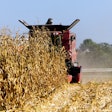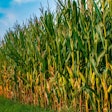
In the coming weeks, consumers across the United States will be heading to the supermarket to purchase their Thanksgiving and Christmas turkeys.
Just how much they will pay for the centerpiece entrée remains uncertain, but it is likely to be at least somewhat related to the nationwide turkey supply, which is restricted because of two diseases: highly pathogenic avian influenza (HPAI) and avian metapneumovirus (AMPV).
HPAI has been infecting U.S. turkey flocks for the past three years, so its impacts are widely known. Less is known about the AMPV outbreak in North America, but it too, is impacting turkey supplies, said Jada Thompson, economist for the University of Arkansas System Division of Agriculture.
And at least for now, there are no approved vaccines to be used against either disease in United States poultry.
Turkey supplies
Data from the United States Department of Agriculture (USDA) reveals that the supply of live turkeys is lower than it normally is.
In September, USDA National Agricultural Statistics Service (NASS) issued its Turkeys Raised Report, which projected that 6% fewer turkeys would be raised in 2024 than in 2023.
And in August, a report from the USDA Economic Research Service stated that on June 1, the number of turkey eggs in incubators was 22.8 million – the lowest it had ever been since 1988. In October, the number of turkey eggs in incubators was down 8%.
Thompson also referenced reports that said placements of newly hatched birds in facilities to be raised to slaughter weight were down in June by 18% year-over-year, with February 2024 the only month since 2005 with lower placements.
“That's a pretty big loss,” she said. “You are nearing 10% of our eggs that won’t result in turkeys to be raised for meat.”
That’s in addition to the loss of already hatched turkeys produced for meat. “In August, we were down 11% in turkey meat,” Thompson said. “That means we won’t have as many turkeys at Thanksgiving.”
 Jada ThompsonCourtesy University of Arkansas
Jada ThompsonCourtesy University of Arkansas
Avian influenza
Even if the hatchery numbers were on par with years past, animal diseases have also had an impact. HPAI has been restricting turkey supplies since early 2022 when the virus first appeared in an Indiana turkey flock. In 2024 alone, 1,266,000 meat turkeys in the United States have been lost to HPAI, as well as 66,500 turkey breeder hens and 4,200 turkey breeder toms. And in the final three months of 2023, the U.S. lost about 3.39 million turkeys to the virus.
Thompson speculates that between 80 and 90 percent of the turkey supply reduction this Thanksgiving could be attributed to HPAI losses. She also indicated production decisions could have a small effect on the supply, while the rest could be attributed to AMPV.
Avian metapneumovirus
One year ago, avian metapneumovirus seldom entered conversations in the U.S. turkey industry, but that is no longer the case. Yet, information about the disease isn't as available as it is about HPAI.
HPAI is a notifiable disease, meaning that whenever it appears in a commercial poultry flock, USDA must alert the World Organisation for Animal Health (WOAH), and those updates include the size and species of the affected flock. All flocks affected by HPAI also must be depopulated.
AMPV, on the other hand, is not a notifiable disease, and therefore infection numbers are not well tracked. Birds in flocks hit by AMPV are also not depopulated, and most of those birds will recover.
“Obviously we don’t have the numbers on avian metapneumovirus. We see HPAI as high profile, because all the birds in the house are taken out,” said Thompson. “Avian metapneumovirus has been so quiet. It’s not flashy like HPAI is.”
With avian metapneumovirus, between 2% and 20% of the birds in an affected flock become sick. However, when you look at all the turkey houses in the United States, even 2% can be a lot, she added.
The recovery rate for turkeys struck by AMPV is pretty favorable, but an infection still has its consequences.
“It changes productivity. If your breeding houses get it, you’re going to have reduced lay, so that’s going to affect our placement of birds,” Thompson said.
She also said AMPV infections lead to loss of appetite for the birds.
“So, you have a week when they’re not putting on any weight. Well, that’s putting you back in terms of weights that you are expecting. You have reduced feed conversion ratios, and then we might have some mortality,” said Thompson. “I don’t think if we are looking at the marketplace, it will not be a large-scale mortality effect, but it is having small-scale multiplicative effects that are happening. When they’re getting sick, that has an effect on growout, so that has an impact not just on the immediate house, but also whether they are slaughtered or harvested.”
How much will consumers pay?
Keeping in mind basic supply-demand economics, it would be easy to conclude that the price of turkey will be higher this Thanksgiving than it was in 2023.
Thompson doesn’t believe that many people will decide to bypass eating turkey on Thanksgiving, because it is “such a great holiday tradition.” But what might happen is that retailers might absorb a large share of that cost increase.
“I think from a retailer standpoint, they’re going to keep prices as competitive (with other retailers) as possible,” she said.
One plausible scenario is that grocers will use whole turkeys as a “loss leader” this Thanksgiving. They might not make a profit on the turkeys they sell, but a turkey at a good price will get shoppers in the store. And while they are there, they will purchase other groceries for their holiday dinners.
“You see that happen a lot at Thanksgiving time,” she said. “Everybody is not going to be making the same profit. (Lower whole turkey supplies will lead to) an increase in price, but how much of that is going to be borne by the consumer? We’ll find out at Thanksgiving.”
Effect on other turkey products
While whole turkeys are taken into consideration more this time of year than value-added turkey products like ground turkey, sliced turkey or turkey sausages, the prices of those products are apt to differ at some stage along the supply chain as well.
And even though those products are less likely to be used as a loss leader for grocers, there is still some mystery about how much of that cost will be passed on to the consumer.
“All prices are reflective of the cost of production,” she said. “I think with avian influenza, it’s ongoing and it doesn’t seem like it’s going away. … If AMPV is going to keep being around, the likelihood is that prices will probably reflect that. I think prices will probably increase, but I don’t think they’re going to be super large increases all at once.”



















